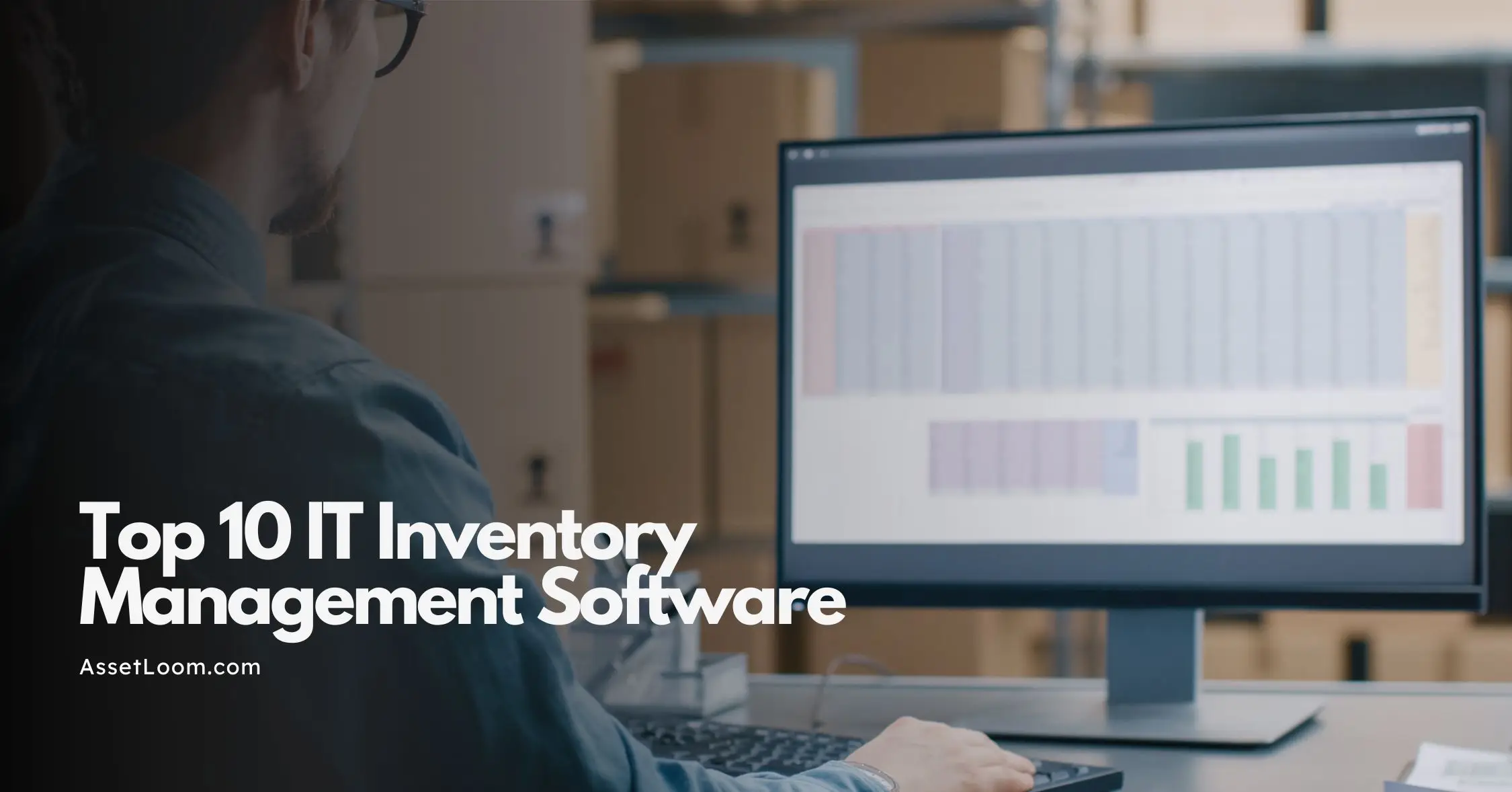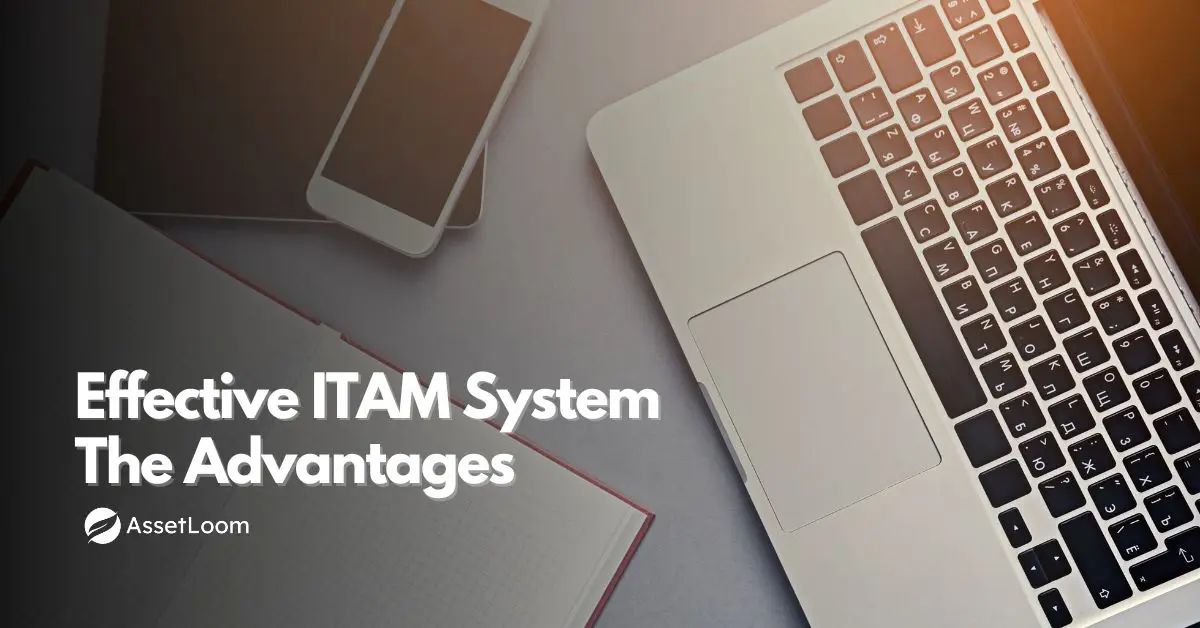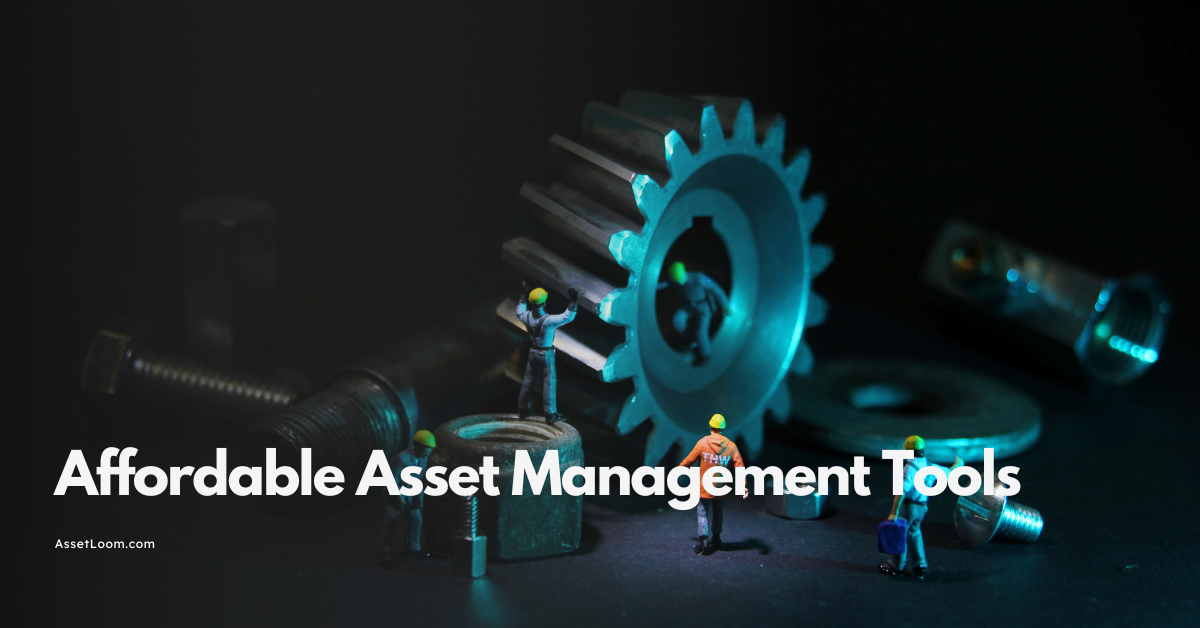Cleaning Up Redundant or Duplicate Asset Records
Duplicate asset records can slow down your system, skew reports, and lead to costly mistakes. Learn how to identify, clean up, and prevent redundant entries in your IT asset inventory
You rely on your asset inventory management to give you a clear picture of what you own, where it is, and who’s using it. But when duplicate or redundant records sneak in, that picture gets blurry fast.
You might see two entries for the same laptop, three records for a single server, or equipment that was retired months ago still showing as "active." Before you know it, your system slows down, reports get messy, and you can’t trust the numbers you're looking at. Even worse, duplicates can cause real problems during audits, budgeting, and license tracking.
The truth is, cleaning up duplicate asset records isn't just about tidying up your database, it’s about making sure your systems perform better, your reporting stays accurate, and your team can make smart decisions based on real data.
In this blog, we’ll show you why duplicate records happen, the impact they have, and the steps you can take to clean things up and keep them that way.
Why Duplicate Asset Records Are a Problem
At first, a few extra records might not seem like a big deal. But over time, duplicate entries can cause bigger problems than you might expect.
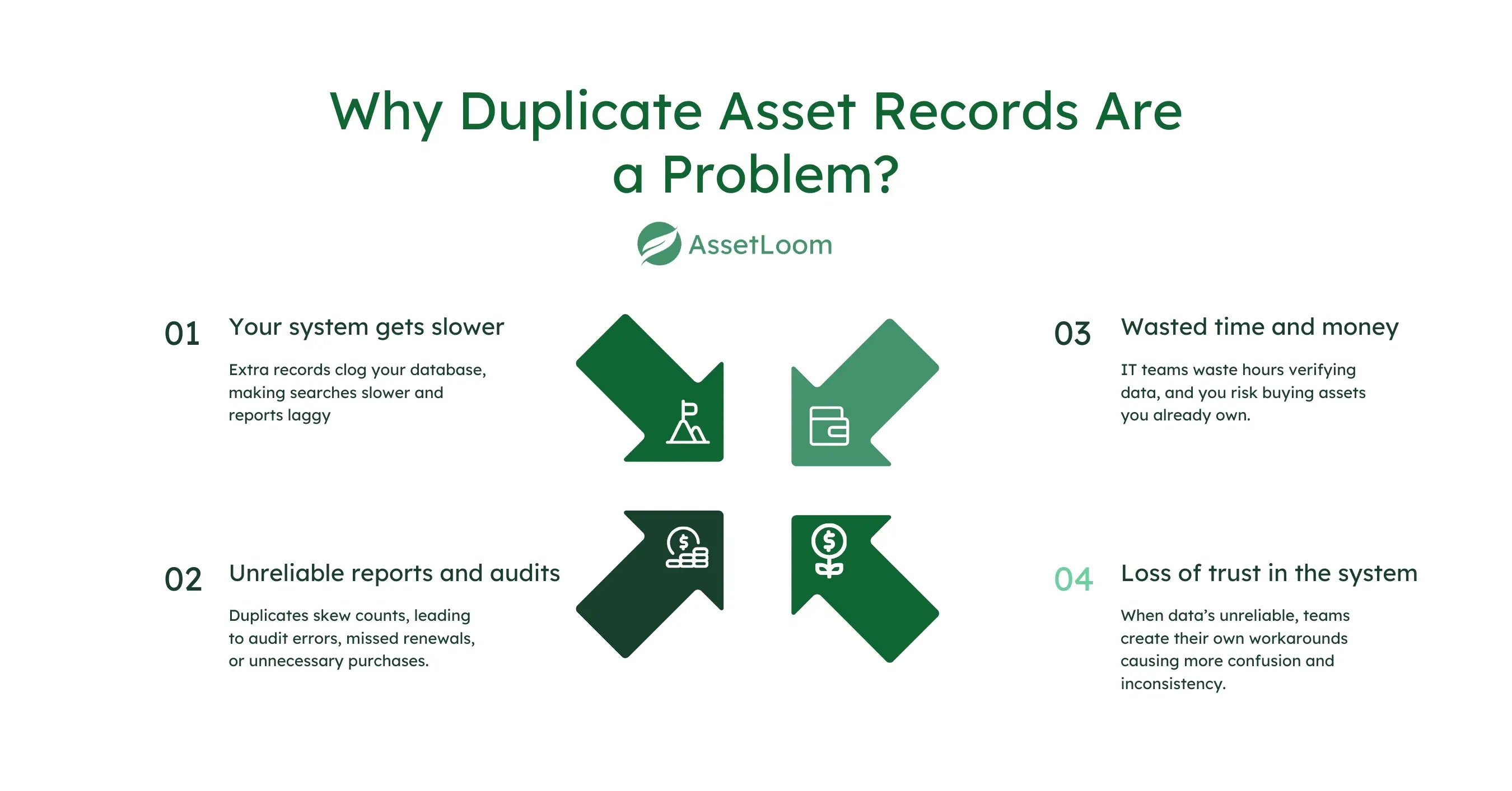
1. Your system gets slower. Every duplicate adds extra weight to your database. As your asset management tool gets clogged with unnecessary records, searches take longer, reports lag, and overall system performance drops. It’s like trying to find one book in a library where every shelf has three copies of everything frustrating and time-consuming.
2. Your reports and audits become unreliable. Duplicate records throw off your counts. You could end up thinking you have more laptops, servers, or licenses than you actually do or worse, miss critical gaps. When it's time for a software audit or inventory review, these mistakes can lead to costly fines, missed renewals, or wasted spending on hardware you don’t need.
3. Your team wastes time and money. When your inventory isn’t trustworthy, your IT team spends more time double-checking information instead of focusing on real work. You might also spend money replacing assets you already have, just because the records were wrong.
4. You lose trust in your system. If people in your organization can’t trust what they see in your it asset management system, they’ll start working around it keeping their own spreadsheets or manually tracking assets. That only leads to even more inconsistencies and chaos.
How to Track a Lost Laptop?How to Spot Redundant or Duplicate Records
Finding duplicates in your IT asset inventory isn't always as simple as scanning for identical names. Duplicates often hide behind slight variations a missing character, a different hostname format, or outdated location data.
1. Identical or Near-Identical Serial Numbers
Serial numbers are supposed to be unique identifiers. If you spot two or more assets with the exact same serial number, it’s almost always a duplicate unless the vendor accidentally reused a code (which is rare).
⚠️ Also, watch out for near-matches: “ABC123456” and “ABC-123456” could be the same device entered twice, once manually and once by an automated discovery tool.
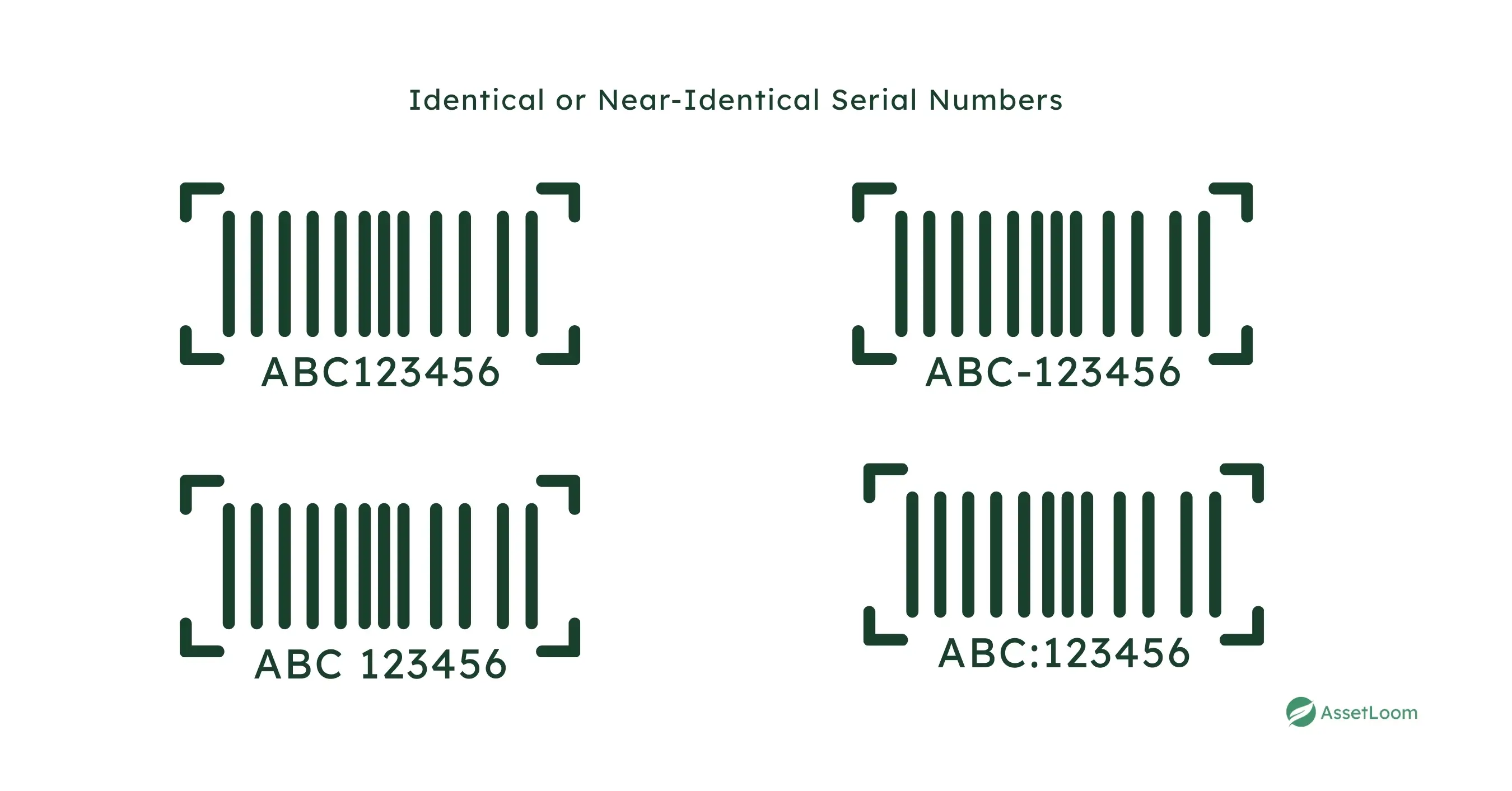
2. Duplicate MAC Addresses or Hostnames
A MAC address uniquely identifies a network interface. If more than one record shares the same MAC, you’re likely dealing with a duplicate. Similarly, hostnames should be unique especially if you follow a naming convention (like LAP-JSmith-001). Duplicates here can lead to conflicts on the network and inaccurate tracking.
🛠️ Tip: Use tools like PowerShell scripts, ServiceNow filters, or built-in reports in your ITAM platform to quickly scan for overlapping MAC addresses or hostnames.
3. Conflicting or Inconsistent Data
Sometimes a duplicate doesn’t look like a duplicate at first glance. One entry might list a laptop as being assigned to "Finance, NYC," while another shows the same serial number assigned to "Marketing, Remote." These inconsistencies happen when separate teams make updates without realizing another record already exists.
📍 Watch for:
- Different locations or departments for the same device
- Ownership changes not reflected across records
- Status mismatches. e.g., “In Use” vs. “Retired”
4. Unusual Inventory Discrepancies
If your ITAM Tool says you have 200 active laptops, but a physical audit only turns up 150, you might have a duplication issue (or outdated records). This problem is especially common in hybrid environments where automated discovery tools and manual entry both feed into the same system.
🔎 Compare:
- System counts vs. physical audits
- Purchase records vs. in-system totals
- Disposal logs vs. active asset listings
5. Performance Slowdowns in Your ITAM System
It might sound indirect, but when your system starts lagging during asset lookups, it could be due to bloated databases filled with redundant entries. These slowdowns aren’t just annoying they can cost real time and productivity.
6. Use Built-In Reports and Scripts
Most ITAM platforms like AssetLoom offer built-in reporting features or query builders to help you detect duplicates. In AssetLoom, you can run a duplicate detection job based on asset tag or serial number.
Step-by-Step Guide to Auditing and Identifying Duplicates
Once you know what to look for, the next step is to audit your asset inventory and actually uncover those duplicate or redundant records. This process doesn’t have to be overwhelming and with the right steps, it can be built into your regular ITAM workflow.
Here’s a step-by-step guide to help you get started:
1. Consolidate All Asset Data Sources
Start by pulling together all your asset records into a single view. This might include:
- Your main ITAM platform (like ServiceNow, Lansweeper, or AssetLoom)
- Discovery tools (e.g., SCCM, JAMF, Tanium)
- Spreadsheets or manual tracking lists still used by teams
- Purchase or deployment logs from procurement
💡 The more centralized your view, the easier it is to spot duplicates especially those created by parallel processes (manual + automated).
2. Define and Standardize Key Identifiers
Before scanning for duplicates, make sure everyone’s using the same “keys” to identify an asset:
- Primary: Serial number, MAC address, asset tag
- Secondary: Hostname, purchase order, user/device assignments
Standardizing how these fields are recorded (e.g., always entering MAC addresses in uppercase, with colons) will prevent false positives and help you find true duplicates.
3. Run Automated Queries to Flag Duplicates
Use your ITAM tool’s built-in reporting features, filters, or SQL-like queries to detect duplicates. Look for:
- Serial numbers that appear more than once
- MAC addresses or hostnames with multiple records
- Assets with identical hardware specs and status fields
🧪 Example SQL logic:
SELECT SerialNumber, COUNT(*)
FROM AssetInventory
GROUP BY SerialNumber
HAVING COUNT(*) > 1;In some tools, you can create similar reports through the UI without needing code.
4. Review and Validate Matches
Just because two records share the same serial number doesn’t always mean they’re true duplicates. Use this checklist:
- Are both records active?
- Do they show conflicting locations or users?
- Is one missing data while the other looks complete?
📌 Pro tip: When in doubt, prioritize the most recent or most complete record and archive or merge the rest (with logs, of course).
5. Document Everything
Keep a record of what you’re finding. Log which fields had the most duplication issues, which tools generated the duplicates, and any patterns that emerge (e.g., multiple entries from manual imports).
Having documentation helps you fix root causes and it’s also useful if someone asks “what changed” a few weeks later.
6. Communicate with Teams
If other departments (like Finance, Procurement, or Security) have their own systems or shadow spreadsheets, loop them in. Duplicates often happen because different groups track the same assets separately.
Establish a shared process for asset updates going forward especially if multiple tools feed into your ITAM system.
7. Schedule Regular Audits
Don’t let this be a one-time project. Build duplicate checks into your regular processes:
- Monthly or quarterly duplicate reports
- Alerts when serial numbers repeat
- Spot checks during hardware refreshes or reassignments
Best Practices to Prevent Duplicates in the Future
Cleaning up duplicates is just half the battle. The key to long-term IT asset management success is to establish practices that prevent duplicates from sneaking back into your system. By setting clear standards, using the right tools, and enforcing rules, you can make sure your inventory stays accurate and reliable.
1. Implement Data Entry Standards
A major source of duplicates is inconsistent data entry. Without clear guidelines, different people will enter asset details in different ways, leading to confusion and duplication.
Best practices:
- Enforce a standard naming convention for asset tags, hostnames, and serial numbers (e.g., always including dashes or avoiding special characters).
- Automate data entry as much as possible through discovery tools or integrations. The more manual input you can eliminate, the fewer chances for human error.
- Set validation rules for key fields like asset tag, serial number, and purchase date — ensuring they match expected formats.
2. Use Discovery Tools and Automation
Automated asset discovery tools like SCCM, JAMF, or Tanium can help keep your data accurate by automatically scanning and updating asset records. These tools can:
- Detect and flag duplicate or missing assets based on their unique identifiers (serial numbers, MAC addresses, etc.).
- Update inventory in real-time, so your system always reflects the current state of assets in use.
By automating the discovery process, you reduce the risk of duplicate records caused by manual entry.
3. Set Up Alerts for Duplicate Entries
Many ITAM tools can trigger alerts when a duplicate is about to be created, giving you a chance to address it before it becomes a problem.
For example:
- If an asset with the same serial number is added, set up an automatic notification to review the entry.
- Use rules in your system to prevent adding the same asset more than once — or flag it for approval before finalizing the entry.
4. Educate Your Team
If multiple teams are involved in asset management (e.g., IT, Finance, Procurement), it’s crucial that everyone follows the same processes. Regular training on data entry standards, best practices for asset tracking, and the importance of accuracy can help ensure consistency across the board.
Provide easy-to-follow guides or quick reference materials so employees know exactly how to log and manage assets.
5. Perform Regular Data Audits and Health Checks
Even with preventive measures in place, periodic audits are essential. Schedule quarterly or biannual reviews to ensure that no duplicates have slipped through the cracks. You can also run routine health checks on your asset management platform to identify any potential data issues before they cause problems.
Pro tip: Set up a reporting dashboard that tracks potential duplication metrics, making it easy to see at a glance whether there are recurring issues.
6. Maintain a Single Source of Truth
Having multiple systems tracking the same assets increases the chance of duplication. The more central your asset management system is, the easier it is to maintain data integrity.
Create a single source of truth your main ITAM system should be the go-to for asset details, and other tools should sync with it. Integrating your ITAM platform with procurement, finance, and support tools can help avoid discrepancies across departments.
By implementing these best practices, you can create a sustainable system that keeps your asset inventory clean, accurate, and easy to manage. Preventing duplicate records will save you time, money, and effort in the long run, ensuring your IT assets are always accounted for and available when you need them.
Cleaning up redundant or duplicate asset records isn’t just a one-time task; it’s a crucial step in maintaining an efficient, reliable IT asset management system. By identifying and removing duplicates, you’ll ensure that your asset inventory remains accurate, up-to-date, and optimized for performance. More importantly, you’ll save time, reduce costs, and avoid potential headaches in the future.
With the right tools, processes, and regular audits in place, you can proactively prevent duplicates from creeping back in. A clean asset database not only boosts the accuracy of your reports and audits but also allows your team to focus on what matters most managing and optimizing your IT resources.
Don’t wait for duplicates to slow you down. Start auditing your asset records today, and take control of your IT asset management for a more streamlined, effective future.

Related Blogs
Subscribe for Expert Tips and Updates
Receive the latest news from AssetLoom, right in your inbox.
